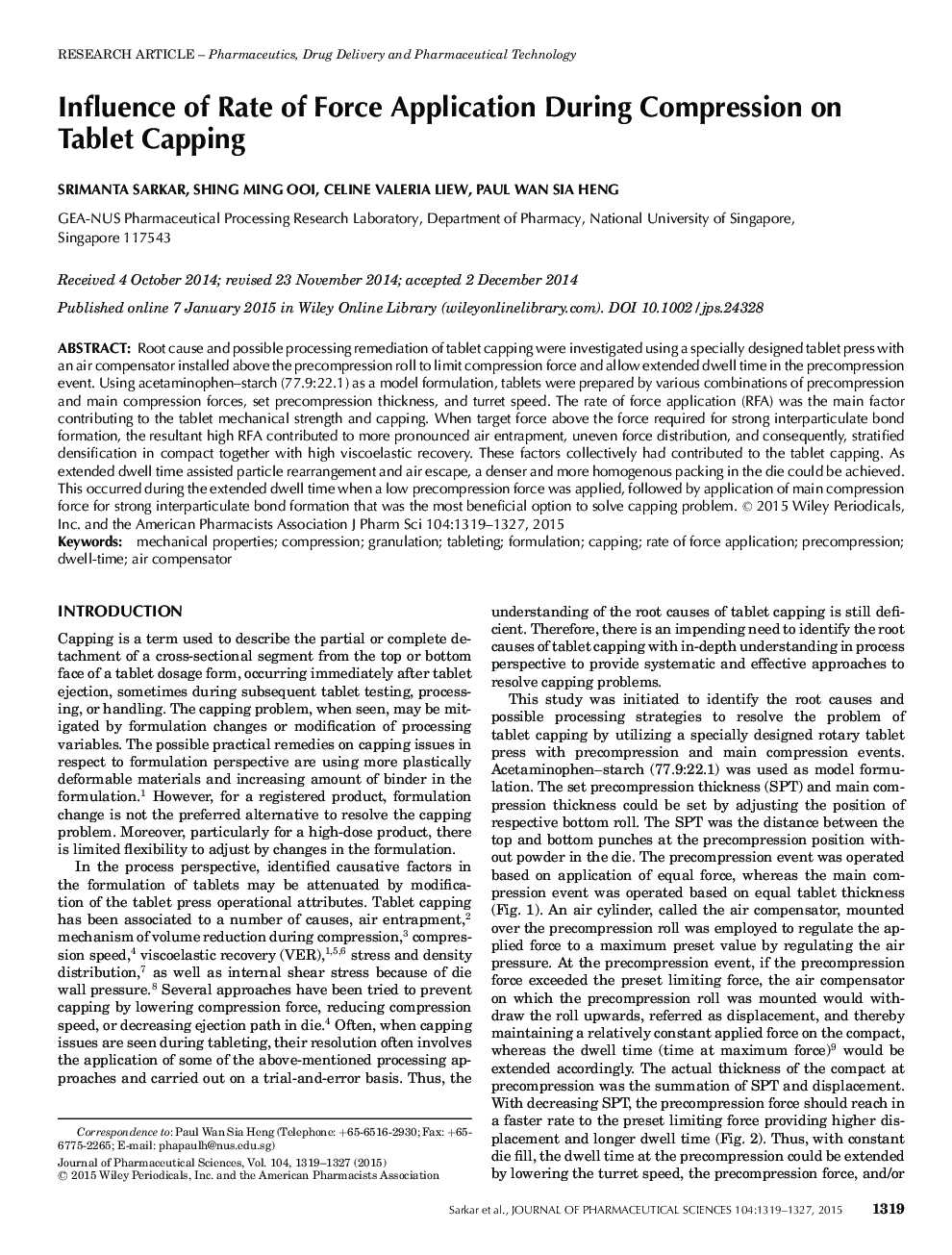| Article ID | Journal | Published Year | Pages | File Type |
|---|---|---|---|---|
| 10162124 | Journal of Pharmaceutical Sciences | 2015 | 9 Pages |
Abstract
Root cause and possible processing remediation of tablet capping were investigated using a specially designed tablet press with an air compensator installed above the precompression roll to limit compression force and allow extended dwell time in the precompression event. Using acetaminophen-starch (77.9:22.1) as a model formulation, tablets were prepared by various combinations of precompression and main compression forces, set precompression thickness, and turret speed. The rate of force application (RFA) was the main factor contributing to the tablet mechanical strength and capping. When target force above the force required for strong interparticulate bond formation, the resultant high RFA contributed to more pronounced air entrapment, uneven force distribution, and consequently, stratified densification in compact together with high viscoelastic recovery. These factors collectively had contributed to the tablet capping. As extended dwell time assisted particle rearrangement and air escape, a denser and more homogenous packing in the die could be achieved. This occurred during the extended dwell time when a low precompression force was applied, followed by application of main compression force for strong interparticulate bond formation that was the most beneficial option to solve capping problem.
Keywords
Related Topics
Health Sciences
Pharmacology, Toxicology and Pharmaceutical Science
Drug Discovery
Authors
Srimanta Sarkar, Shing Ming Ooi, Celine Valeria Liew, Paul Wan Sia Heng,
